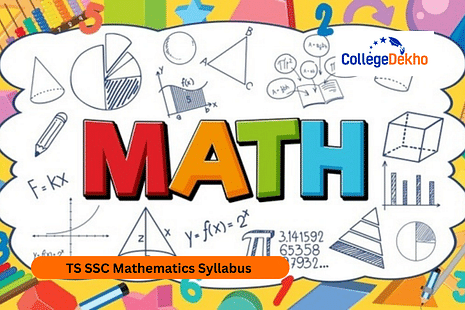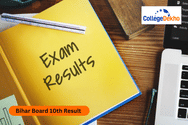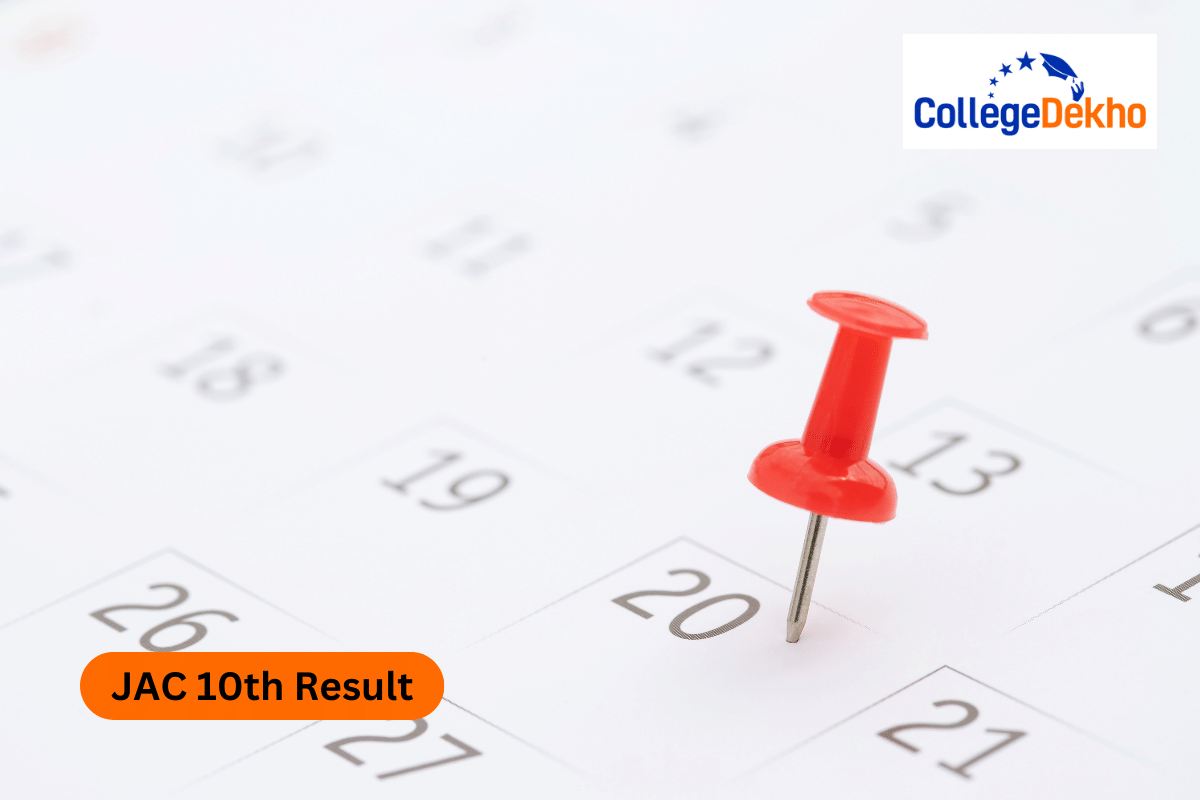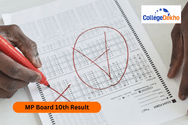

Never Miss an Exam Update
TS SSC Math Syllabus 2024-25: The Board of Secondary Education, Telangana prescribes the TS SSC Math Syllabus 2024-25 in PDF format on its official website, at bse.telangana.gov.in. TS SSC Math is a compulsory and core subject along with 4 other main subjects, Science, Social Science, First Language, and Second Language. The TS SSC Syllabus 2024-25 for Math comprises 8 chapters in total. The highest marking weightage carrying chapters are Algebra, Geometry, and Trigonometry, which will carry marks weightage of 20, 12, and 10 respectively. The entire Telangana 10th Math question paper is divided into two papers, papers 1, and 2. Also, Check TS SSC Exam Pattern 2024-25
Each paper of the TS SSC Math Exam 2025 will be conducted for 40 marks, making the total 80 marks. The remaining 20 marks will be allotted for internal assessment. The state board will conduct the Telangana Board SSC Math exam 2025 for 3 hours and 15 minutes. All the students prepping for the TS SSC Board 2025 are advised to check the Telangana 10th Math Syllabus 2025 to know more about the topics that will be covered in the examination and prepare accordingly. The state board releases the Telangana 10th Math Syllabus 2024-25 for all regular and private students. TS SSC exams 2025 will be conducted in April 2025 in pen and paper format. Read the complete article to have an overview of the TS SSC Math Syllabus 2024-25.
TS SSC Latest Updates 2025
- March 18, 2025: The TS 10th exams 2025 will start from March 21 with First Language (Group-A) and will end on April 4, 2025 with OSSC Main Language Paper-II.
- March 18, 2025: BSE, Telangana is likely to release the TS SSC Result 2025 on April 30, 2025 on the official website as per last year's trend.
Also Read: TS SSC Grading System 2025
TS SSC Math Syllabus 2024-25: Download PDF
The direct link to download the TS SSC Math Syllabus for the academic year 2024-25 will be activated once the syllabus is released:
How to Download TS SSC Math Syllabus 2024-25?
Students can download the Telangana SSC Math Syllabus 2024-25 from the official website of the Telangana state board.
- Step 1: Students need to open the official website of the Telangana board.
- Step 2: On the homepage, find the Quick Links section.
- Step 3: You can find a link for the TS Class 10th syllabus 2024-25.
- Step 4: A new window will be opened on your screen where subject-wise syllabus will appear.
- Step 5: Click on the syllabus PDF to download the TS SSC Math syllabus.
- Step 6: Save the syllabus PDF and keep it for future use.
TS SSC Math Syllabus 2024-25
From the table below, students can get the detailed chapter-wise Telangana Board 10th Math syllabus 2024-25:
Chapters | Chapter names | Topics |
|---|---|---|
Chapter 1 | Real Numbers |
– Introduction, HCF – Some number generalisations
|
Chapter 2 | Sets |
Equal sets. Subsets, subsets of the set of real numbers. Universal set and cardinality of sets.
– Sets, subsets – Disjoint sets.
– Union, intersection, difference of sets |
Chapter 3 | Polynomials |
|
Chapter 4 | Pair of Linear Equations in Two Variables |
|
Chapter 5 | Quadratic Equations |
|
Chapter 6 | Progressions |
|
Chapter 7 | Coordinate Geometry |
|
Chapter 8 | Similar Triangles | Similar triangles Definition, illustrations, and characteristics of related triangles.
|
Chapter 9 | Tangents and Secants to a Circle |
|
Chapter 10 | Mensuration |
Surface Areas and Volumes
|
Chapter 11 | Trigonometry |
Proof and applications of the identities sin2A + cos2 A =1 1 + tan2A = sec2A cot2A + 1 = cosec2A |
Chapter 12 | Applications of Trigonometry |
|
Chapter 13 | Probability |
|
Chapter 14 | Statistics |
|
TS SSC Math Exam Pattern 2025
The TS SSC Math exam will be conducted for 100 marks where the theory paper will carry 80 marks in total and the remaining 20 marks will be allotted to internal assessment. The TS SSC Math exam paper consists of two papers (Paper 1 and Paper 2), each carrying 50 marks, where 40 marks will be for theory and 10 marks for internal assessment. The question paper will be divided into two parts, Part A and Part B. The Part A will carry 60 marks and the Part B will carry 20 marks. Part A will be further divided into three sections. Check out the table given below for the Telangana SSC Math question paper pattern 2025:
Particulars | Number of Questions | Marks |
|---|---|---|
Part A: Section 1 | 6 Questions of 2 marks each | 12 Marks |
Part A: Section 2 | 6 Questions of 4 marks each | 24 marks |
Part A: Section 3 | 4 Questions of 6 marks each | 24 marks |
Part B | - | 20 marks |
Total | - | 80 marks |
Also Check
TS SSC Math Syllabus 2024-25: Passing Marks
As per Telangana Board SSC Exam Pattern 2024-25, students are required to get a minimum of 35% of the total marks to pass the TS SSC exam 2025. Students will have to pass formative and summative assessments separately for a subject.
TS SSC Math Passing Marks for Theory
Subjects | Total Marks | Minimum Passing marks |
|---|---|---|
Mathematics (Paper 1) | 40 | 14 |
Mathematics (Paper 2) | 40 | 14 |
TS SSC Math Passing Marks for Formative Assessment
Subjects | Total Marks | Minimum Passing marks |
|---|---|---|
Mathematics (Paper 1) | 10 | 3 |
Mathematics (Paper 2) | 10 | 3 |
In non-language subjects, students should get passing marks in each of the two papers separately. In the case of formative assessment (internal assessment), one should acquire 3 marks out of 10 marks. In the theory exams, students must secure 28 marks and 7 marks in the internals.
FAQs
You are advised to score at least 35% marks in both theory and practical papers to pass the TS SSC examination. In the theory part you need to score 14 marks in both paper 1 and 2, whereas in the internal assessment, you need to score at least 3 in both the papers.
Was this article helpful?
























